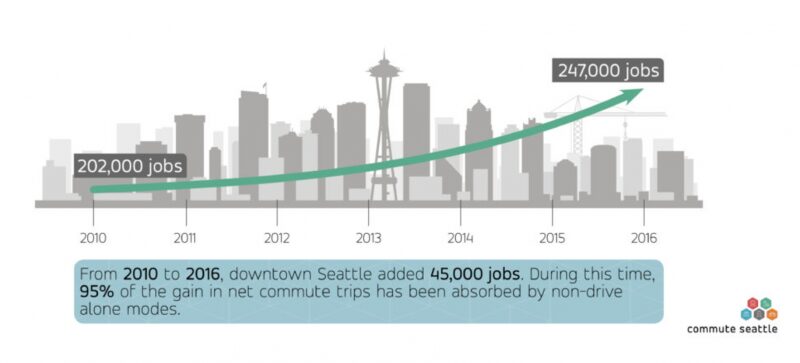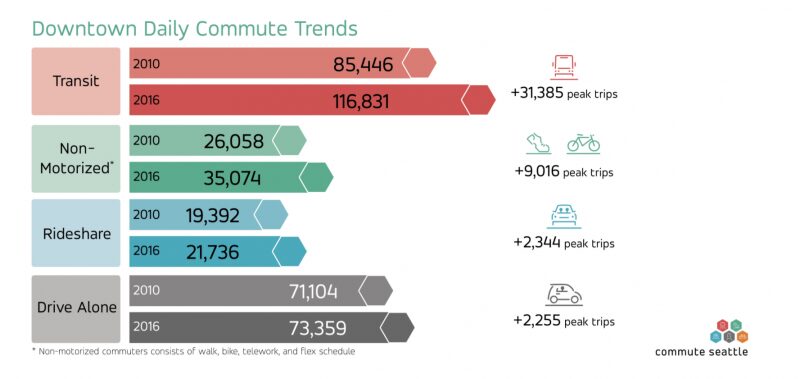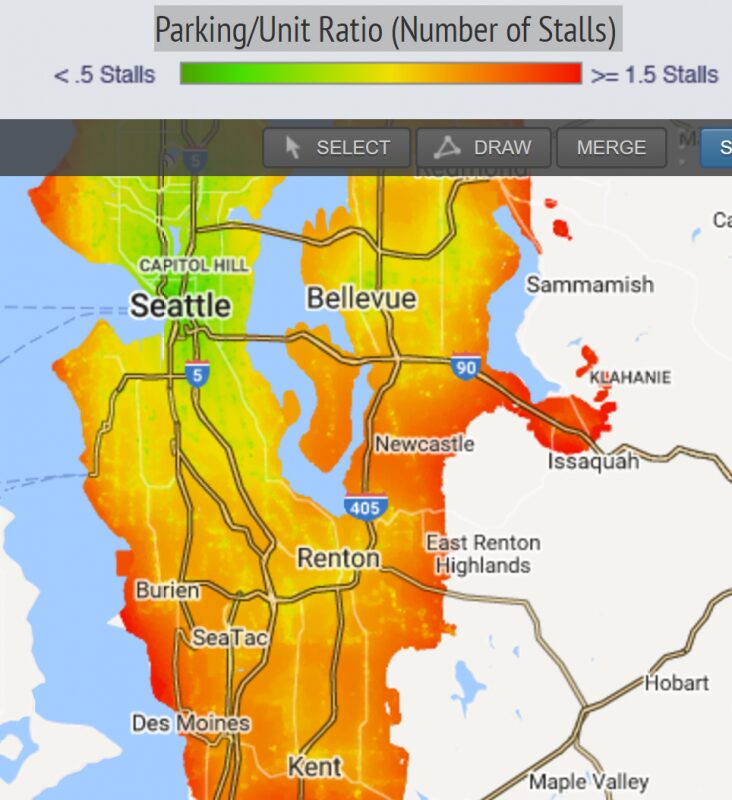As an apartment owner or developer, the question of parking is becoming more and more critical. Yes, parking can drive revenue – yet it is also very costly to build, and if use (and therefore income) declines, parking is very difficult to repurpose.
Several factors are making the parking question increasingly important to analyze in greater detail:
- Changes in renter preferences (are cars going the way of the Blackberry?)
- Traffic, congestion & ownership costs making cars less desirable
- Cost to build parking becoming prohibitive to project cost
- Better options than car ownership exist & are becoming more plentiful
Why Are More Residents – and Millennials – Going Car-less?
Being carless in Seattle a decade ago was unthinkable. The buses took hours to crawl across the city, and unless you had the muscles and endurance to pedal a bike up Seattle’s many hills, you were out of luck. Today, a carless commuter has much better options.
Accordingly, car ownership in Seattle is declining—for the first time in nearly 50 years! According to the latest Census data, the percentage of households in Seattle that own a vehicle dropped by 1% in 2015. While this change might sound small, it’s the first dip in car ownership since the 1970s. And the decline is driven almost entirely by Seattle’s millennials, also known as the bulk of the renting base.
Why the decline?
DRIVING IN SEATTLE IS A MESS. According to traffic data provided by Kirkland-based Inrix, Seattle has the 10th worth traffic in the US – and the 20th worst in the world(out of over a 1,000 cities measured!). We just built a new bridge across SR-520, so traffic will get better, right? No such luck. Seattle is currently the fastest-growing city in America, so don’t plan on cruising along our pot-holed roads alone anytime soon.
DRIVING IS COSTLY. The combined costs of gas, maintenance, and parking are proving too much for many younger residents, especially when they only need their cars for grocery runs or weekend trips. Imagine where else a renter could allocate the roughly $6,000 to $10,000 they will spend annually to use a car that on average is parked 95% of the time.
DRIVING ISN’T AS COOL, ANYMORE. Maybe a shiny $100K Model S is a sign of prosperity to a Silicon Valley techie, yet in the Subaru and Birkenstock PNW, hopping on that bus or arriving to a date in a diminutive (READ: efficient and earth-conscious) Car2Go is the “new” cool.
Myriad options beyond car ownership exist, and the offerings are getting cheaper. It’s easier than ever to live in Seattle without a set of wheels.
But we return to the original question: what does this trend mean for real estate investors?
Going to Work Car-less is the New Trend
It’s almost a universal truth that people living in urban environments want to live as close as possible to easy, accessible transit options. Getting to work is a prime consideration in where to live, yet how one gets to work is changing rapidly.

So how are renters getting to their jobs in downtown Seattle when they go car-less? A variety of ways. Yet the fastest-growing trends are those that don’t require building more parking spaces – namely, public transportation and non-motorized modalities like bicycles or even walking.

Going Car-less Isn’t Just for Urbanites
We’re already seeing development follow transit in Seattle. Planned developments in North Seattle, Seattle’s Eastside, and Snohomish County are clustered around the future light rail stations in anticipation of an explosion of demand.
The light rail’s steady expansion allows people living outside Seattle and Bellevue’s urban downtown to meet up with friends on Capitol Hill or in Columbia City without ever getting behind a wheel. Commuting on the light rail or on one of the RapidRide buses is faster than waiting in the daily traffic on I-5.
Look for rapidly increasing rental rates up and down light rail corridors over the next five years. In the meantime, factor a building’s transit score into its value as much as its available parking. For many residents – and especially millennials – a long walk to the closest bus stop will be a bigger deal breaker than no parking.
So How Much Parking Do you Really Need?
Five years ago, apartment developers couldn’t get away with building apartments that didn’t also include parking. Everyone had a car, and they needed someplace to put it! Parking was hardly considered an amenity because, at a certain price point, renters expected the option.
That’s not the case anymore. Not only are newer buildings including drastically less parking for residents, the decline hasn’t impacted the buildings’ values. We recently sold an apartment at record-breaking prices in Seattle’s core that had nearly zero parking, and I’ve seen the same trend in sales across the city.

If car ownership continues to decline over the next five years, developers will continue to decrease the parking offered in buildings in exchange for more units or value-add amenities.
Getting down to the nitty-gritty of how much parking your apartment really requires remains a tricky question, but more tools are becoming available: Right Size Parking is one such tool that helps best approximate parking requirements for a particular location.

Tracking and estimating demand for parking is tricky, and we are not all going to get it right immediately. Even in a dense, urban city like Chicago, apartment developers are building too much parking. A good step in the right direction, however, is to work with experts who have experience in markets that have similar growth patterns to our own city, and who will think critically about emerging patterns. New technologies are quickly emerging, and tenants’ lifestyle patterns and preferences can change just as quickly. Make sure you’re working with someone who knows the market and can help you capitalize!

